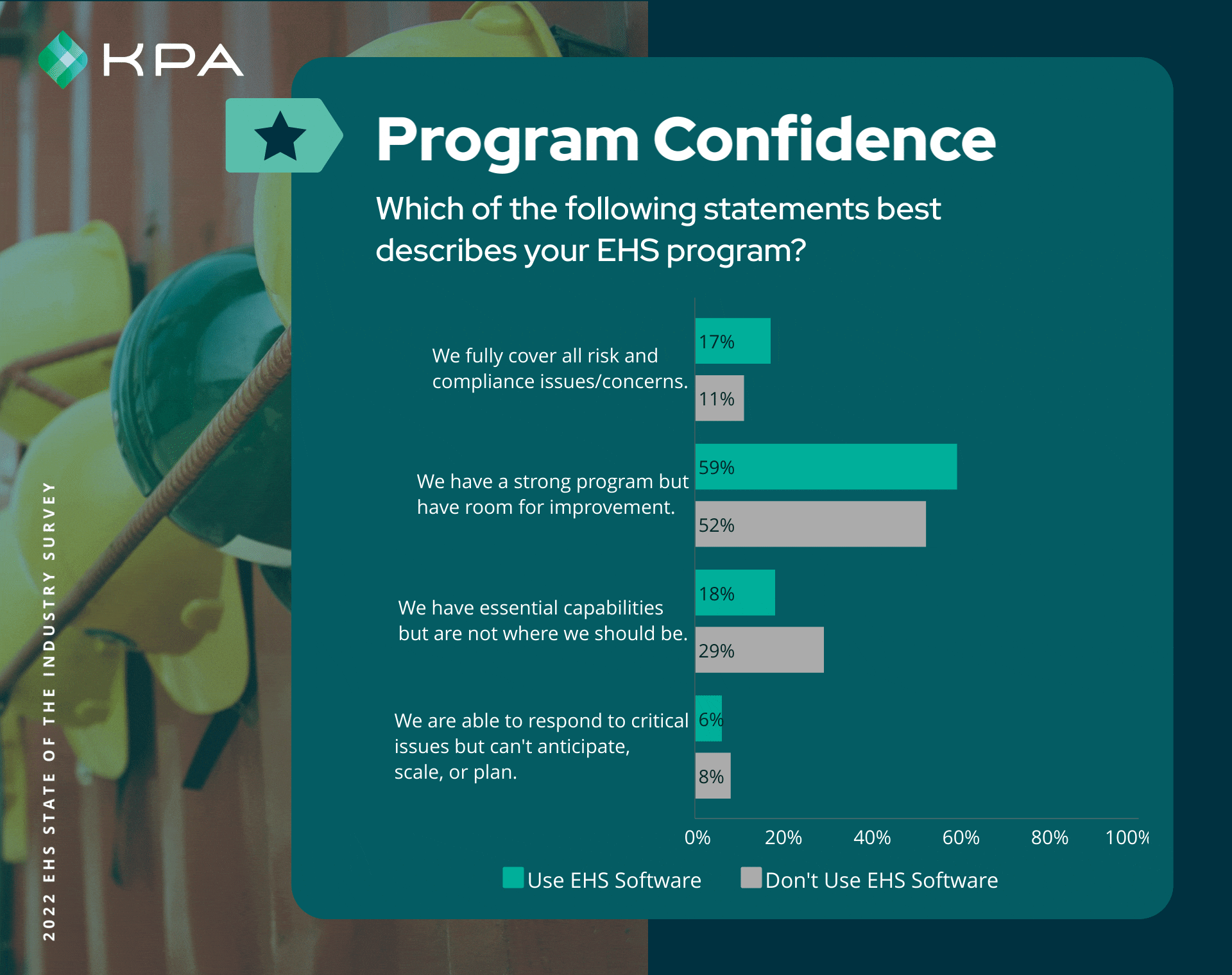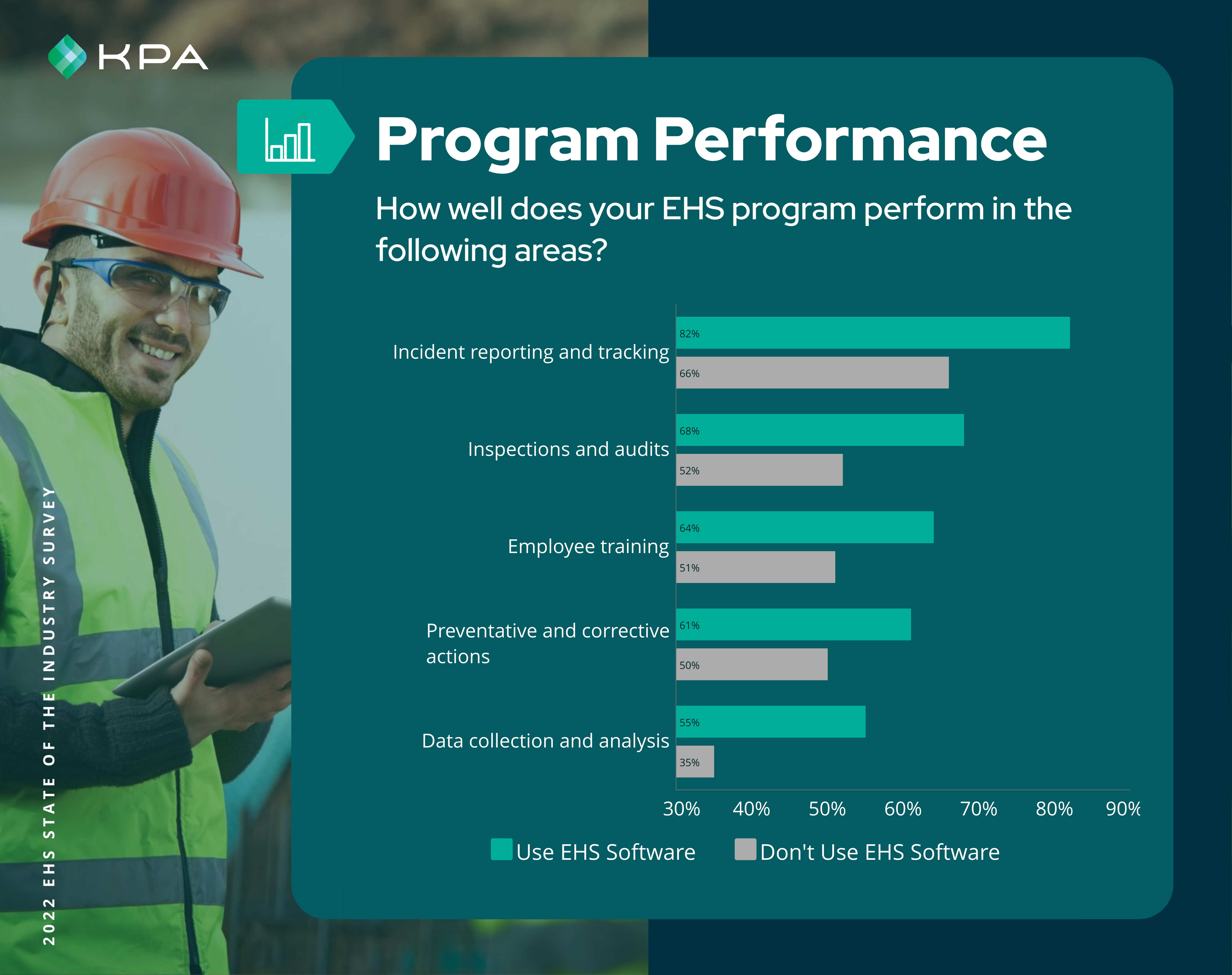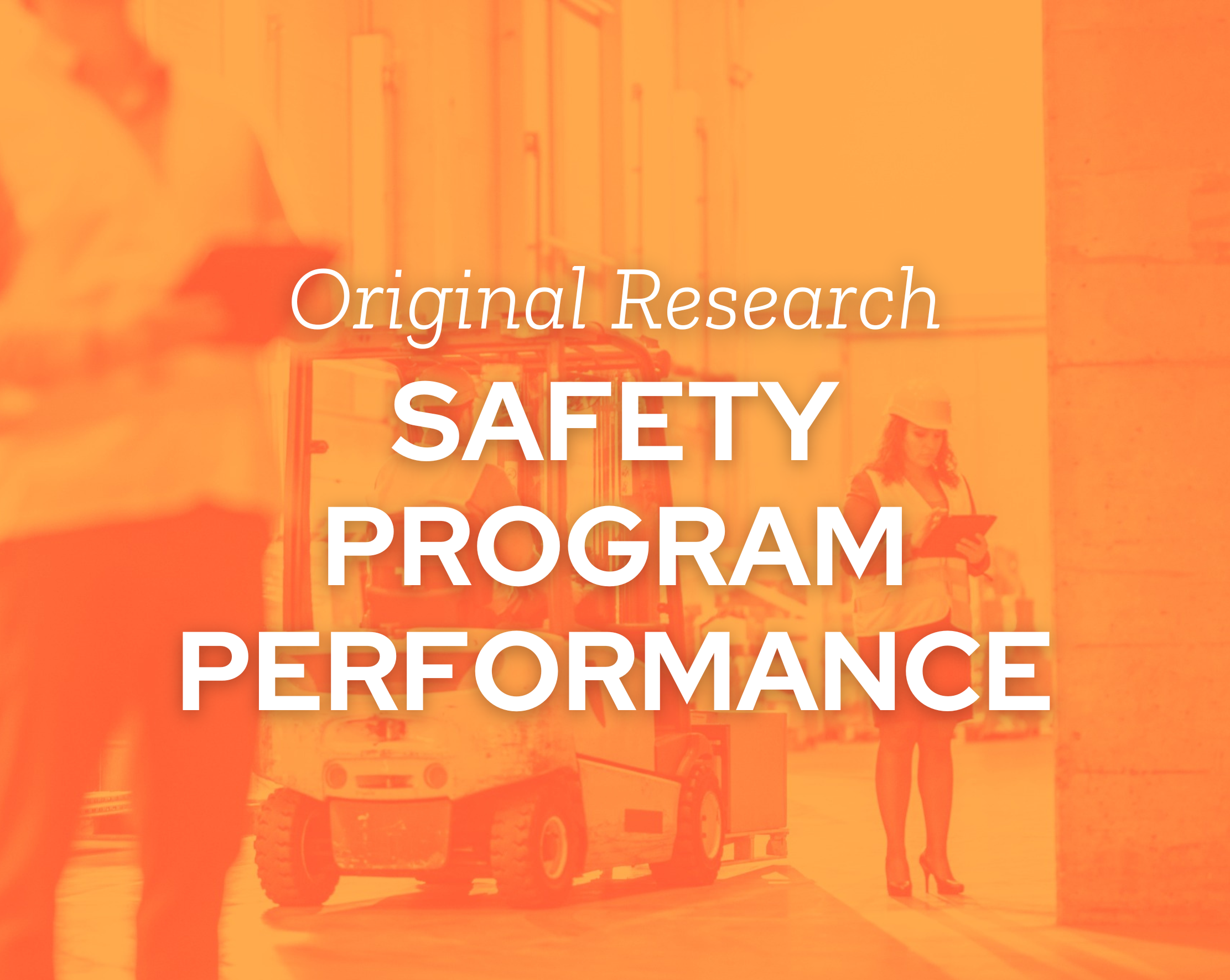Does EHS Software Affect Safety Program Performance? Here’s What the Results Show
We asked respondents if they think the benefits gained from their EHS program exceed the cost. Here’s what they had to say.
These are the latest study findings from this year’s State of the Market: EHS Program report. It’s our third year partnering with EHS Today on the study, surveying trends in Environment, Health, and Safety programs.
This is the last in a series of blog posts based on the study, in which we present the data and our conclusions in a quick-read format.
You can catch up on all of the articles in the:
EHS Software Users Report Stronger Program Performance
We asked respondents if they think the benefits gained from their EHS program exceed the cost. More than two-thirds (69%) of all respondents think the benefits exceed the costs of their EHS programs, up from 61% in 2021.
We asked all respondents to summarize the status of their EHS program development. Then we compared the responses of EHS software users to non-users. The figure below shows that overall, EHS software users:
- More frequently categorized their programs as “strong” or “fully covering all risks,” and
- Less frequently categorized their programs as “not where we should be.”

The biggest disparity is for “We have essential capabilities but are not where we should be.” Only 18% of respondents who use EHS software characterized their EHS programs that way, compared with 29% of non-users.
Download the full study to learn how high-performance EHS programs elevate safety as an organization-wide priority.
When we asked about satisfaction levels for specific program performance categories, respondents who use EHS software once again reported higher program performance than those who do not use EHS software.
For example, 55% of non-software users reported “average” satisfaction with their program’s data collection and analysis as compared with 35% of software users.
As shown in the figure below, EHS software users reported “good” or “excellent” performance more often than non-users for every category we queried, from incident reporting and tracking to data collection and analysis.

As you can see, there are good arguments for investing in EHS software:
- More than two-thirds (69%) of all respondents think the benefits exceed the costs of their EHS programs.
- EHS software users more frequently responded that their programs were strong or fully covering all risks than non-users.
- EHS software users report higher satisfaction levels for every EHS program performance category than non-users.
Making Your Case for EHS Program Investments
Like in 2021, the data collected in the 2022 “State of the Market: EHS Program Performance” survey makes a strong case for investment in EHS Program software and technology. Software users enjoy a higher-performing EHS program.
Tying it all together:
EHS Software Supports both the Participation and the Systems Sides of Safety Programs
While reviewing the data, KPA’s Product Director, Jade Brainard stated, “In a time like this, it is crucially important to ensure that you have the right tools and resources in place so that safety doesn’t become a burden. Have tools that are that are easy, that are quick, that are practical for the environment that the workers are in. So if I’m out on a job site not having to go to a laptop or pull out a piece of paper that have something that is that is quick and easy and practical for for my my day to day process, that is crucial to increase the likelihood of getting employee engagement and adoption and leadership involvement in the overall safety program.”
So, if the results are clear, how do you choose the right EHS software for your business?
Ultimately, the best EHS software is employee-centric. It generates better safety outcomes because it’s easy to use, and people have an incentive to use it. In other words, a system needs to be built for your workforce. If it’s too complicated, unwieldy, or unintuitive—if it doesn’t align with their existing workflows—they won’t use it.
To determine if a solution is the right fit for your organization, ask the following questions:
Are self-guided forms available?
EHS reporting should take minimal time and effort on the employee’s part.
Can every user access forms and an information library?
If the system creates silos, it’s hardly better than a spreadsheets-and-binders approach.
Is the solution mobile-ready?
Business today happens on phones. Any employee should be able to quickly pull out their mobile device and enter information at a moment’s notice.
Are data dashboards included?
Any software you purchase should have strong reporting and dashboard capabilities. Again, ease of use is critical. Keep in mind that EHS might not be a user’s only job. When someone’s busy, they should be able to log in and find the exact data information they need, when they need it.
Want help making a smart decision? Grab a copy of the EHS Software Buyer’s Guide.
KPA EHS – The Backbone of Your Safety Program
KPA EHS helps you develop a comprehensive EHS program that harnesses technology, best practices, and the concerted efforts of your workforce to maintain a safe and productive workplace.
Introducing an EHS software platform tailored to the needs of your business. Manage your safety program in an all-in-one system designed to engage your employees, instill a culture of safety, and enable regulatory compliance.

